
Rights Reserved - Free Access.
This digital object is protected by copyright and/or related rights. This digital object is accessible without charge, but its use is subject to written permission.
Unless expressly stated otherwise in the licensing conditions, you are free to make any of the acts permitted by your national copyright and related rights act, including browsing, printing and making a copy for your own personal purposes.
All other acts of reproduction and communication to the public are subject to the licensing conditions attached to the digital object.
ARMY BOOTS OF THE WORLD. REVIEWS
Important notice: we do not sell any boots! The prices are given for information purposes only!
GDR ![]()
GDR Boots for Paratroopers of NVA and the Ministry of State Security (Sprungstiefel des NVA und Ministeriums für Staatssicherheit der DDR)
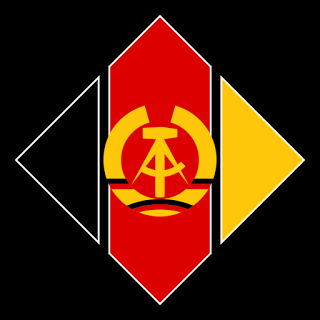
The National People's Army of the German Democratic Republic (GDR) - Nationalen Volksarmee der DDR (NVA der DDR) was the most powerful and professional among all the USSR allies in the Warsaw Pact, if not to consider USSR itself. Though NVA was not so numerous as, for example, the armies of Poland or Czechoslovakia, it had the highest level of combat cooperation with the Group of Soviet Forces in Germany, much more close than the other armies of the Eastern bloc.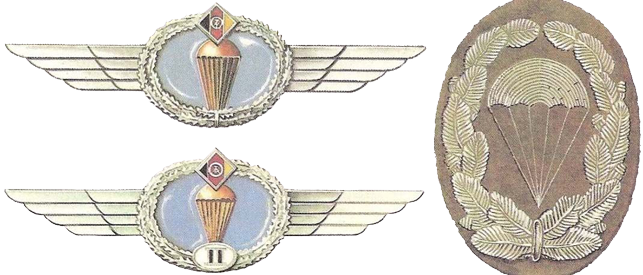

According to a popular belief, the parade uniform of East German army was closer to the uniform tradition of the Third Reich armed forces (Wehrmacht), to a much greater extent than the uniform of West German Bundeswehr. The difference was only in minor details such as uniform fabric material, the appearance of buttons and cut of the collar... Also the state symbols of the Third Reich were replaced by the East German ones.

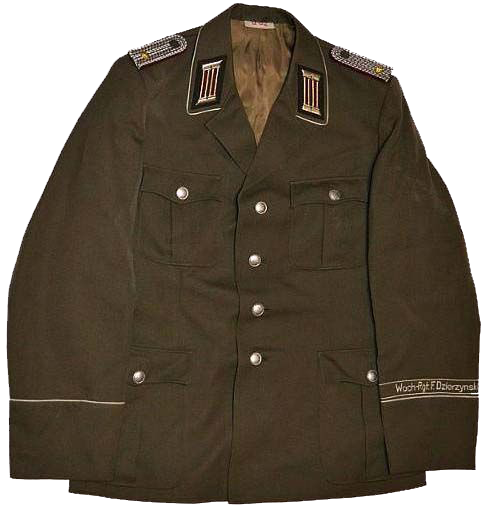
Even the development of the famous East German M-56 model steel helmet began in 1944 for the Wehrmacht soldiers. This type of helmet featured a beveled shape that allowed to reflect shell splinters and bullets quite effectively. During the late period of the war the nazis simply had no time to finalize and start the production of this model, but the socialist East Germany has managed to finalize this helmet, eliminate the defects (mostly connected with fastening system) and equip the NVA (GDR National People's Army) with these helmets in 1956.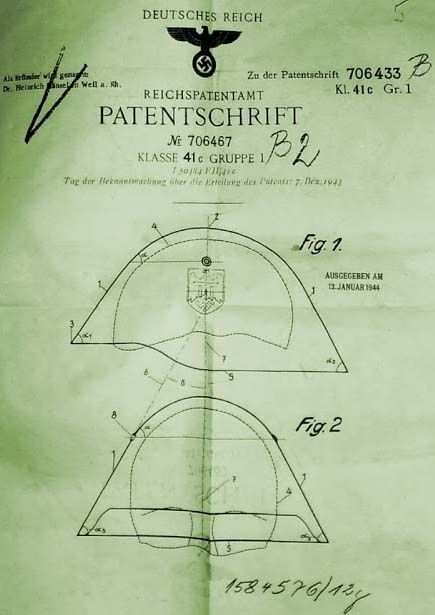
If to say about the professional skills and combat spirit of the East German paratroopers (Fallschirmjägern der NVA DDR), they were virtually the direct successors of the III Reich Luftwaffe paratroopers traditions, and they were deservedly considered one of the strongest and most qualified units throughout the whole Warsaw Pact, possibly surpassing the West German counterparts.
Of course, such comparison could have sense only if it is based on actual clashes between the German paratroopers from the West and the East, but, fortunately, it has never happened.
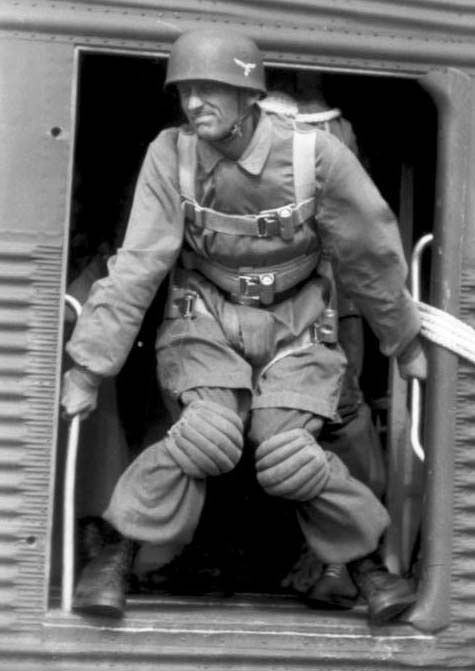
The conclusion about the superiority of the East German paratroopers can be made at least on the ground of the fact that the West German paratroopers unit (Luftlande), established in 1956 and still considered to be the elite, have never participated in any combat operation. This unit is generally a "unique" one, because it is focused on the defense tasks only. The Bundeswehr command understood this fact clearly, so they tried to overcome the existing strict prohibitions: some Bundeswehr NCO and officers took active part in the Vietnam War in the ranks of the United States Army, but this was done very secretly. These people were "temporarily discharged" from the Bundeswehr, then they fought in the ranks of the U.S. Armed Forces as volunteers, receiving invaluable combat experience, then returned to Federal Republic of Germany, where they were restored on service again with promotion.

The paratroopers of the GDR, on the contrary, have been officially taking active part in almost all the operations of the Warsaw Pact (particularly in Ethiopia, Syria, Angola, Mozambique and in some other conflicts). They worked as advisors in the airborne and army units in many "Socialism-oriented" developing countries. While East German airborne troops were created only after the West German counterparts, in 1962, and consisted of a single, 40th Parachute Battalion "Willi Sänger", named in honor of the German anti-fascist Willi Sänger, they were among the attackers and aimed at active operations in the rear side of the potential enemy.
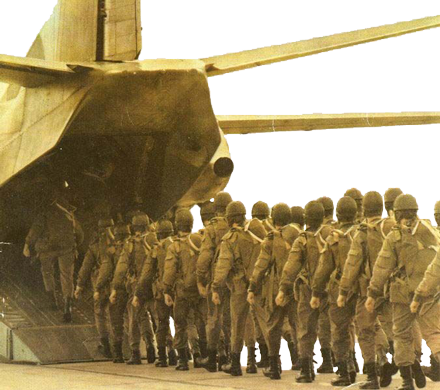

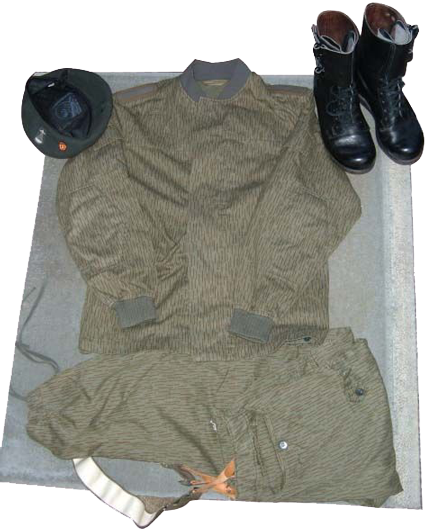
For instance, a special subversive battalion was stationed in the South-West part of GDR. This unit was equipped with trophy American armored vehicles (M48 tanks and M113 armored troop carriers), which had been captured in battle and then handed over to the East Germans by their North Vietnamese comrades. In peacetime, they kept camouflage: the armor vehicles were painted according to the GDR National People's Army regulations, while the personnel of this unit was dressed in typical East German infantry uniform. But in case of war, this battalion was intended for active sabotage operations behind enemy lines under the guise of NATO troops.
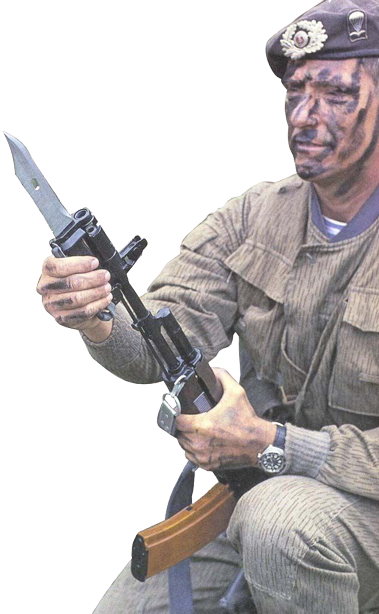
The 40th airborne battalion "Willi Sänger", deservedly considered by Western experts as one of the most professional units among the Warsaw Pact troops, was stationed in the town of Proro, on the Baltic island of Ruegen. There the East German paratroopers were trained to conduct subversive operations as an amphibious units, in interaction with the "frogmen" of KSK 18 special groups of the GDR Navy. Although it was never officially recognized, the soldiers of the "Willi Sänger" battalion were classic "commandos", aimed to perform reconnaissance and sabotage tasks deep behind the enemy lines.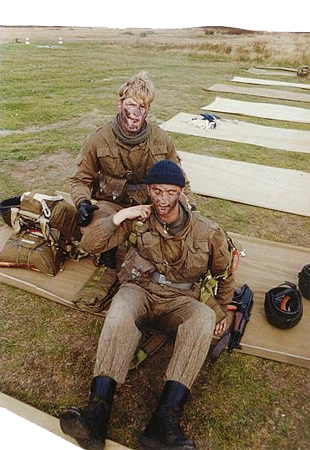
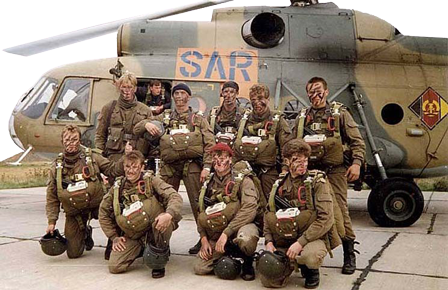
The East German "younger brother" of Soviet KGB - the Ministry of State Security of the GDR (Ministerium fur Staatssicherheit, abbreviated - MfS), which is colloquially known as the "Stasi", also had its own paratroopers. The well-known short name "Stasi" is derived from "Staatssicherheit", literally - "State Security".
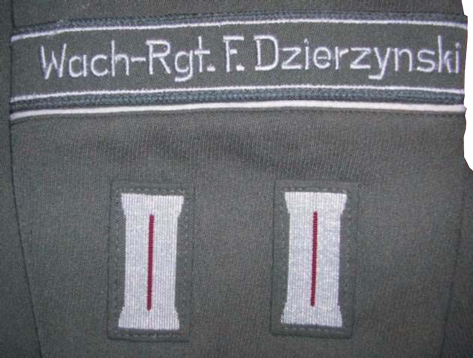
The most elite unit of the "Stasi" was the guard regiment "Felix Dzierzynski" ("Felix Dzierzynski Wach Regiment der MfS"), actually it was an analog of the Soviet Internal Forces Division named after Dzierzynski. However, the number of this East German division personnel exceeded the usual regiment, counting more than seven thousand people and formed in three battle groups (one training unit and two combat groups of three mechanized infantry battalions).
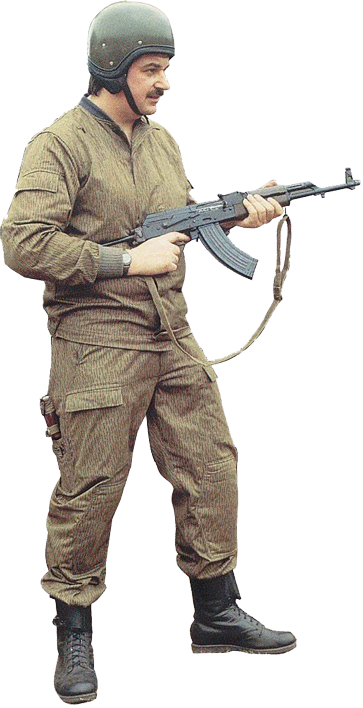
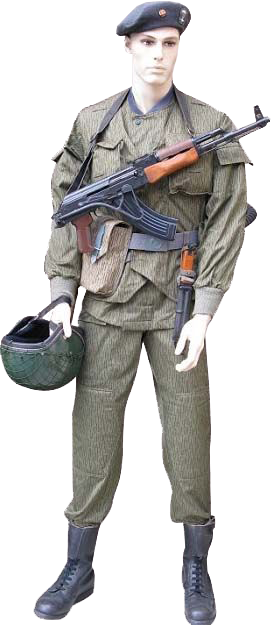
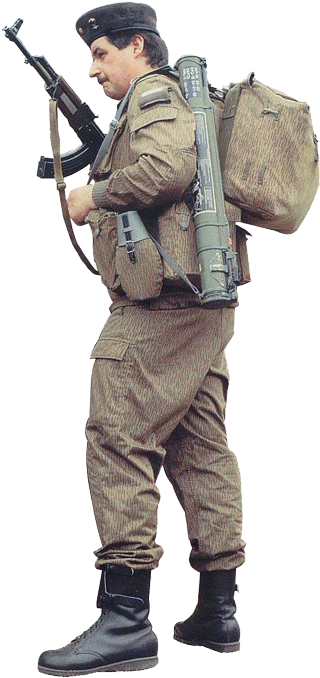
In general, the equipment and uniforms of the East German state security and army paratroopers were more or less similar, but their jump boots were different. An interesting fact: the jump boots were called differently in the East and the West parts of Germany. If the West German boots were called "Springerstiefel", the East Germans preferred the name "Sprungstiefel".
Among the early jump boots one should mention the so-called "KVP stiefel"-type boots , as they usually had marking with this abbreviation.
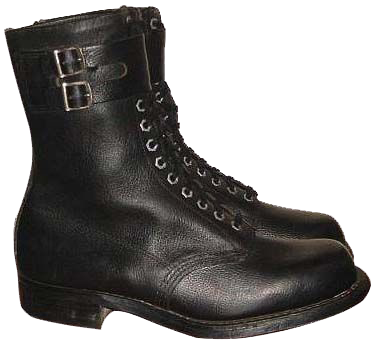
"KVP" means "Kasernierte VolksPolizei", i.e. "Barracked People's Police". This structure was the forerunner of the NVA (National People's Army of the GDR). Since October 1948, they performed police functions, and the names of these units were different. They received the most famous name "KVP" on June 1, 1952. From the very beginning, this police unit, which was formed by the Soviet Military Administration in Germany, got the name "Bereitschaftspolizei" ("Police of readiness"). They used to recruit the volunteers - the former soldiers of the Wehrmacht, mainly from the number of German prisoners of war, selected in the P.O.W. camps on the territory of the USSR. They lived in barracks, having got military training and rigorous indoctrination in the spirit of communism. First, there were forty units of 100 - 250 people in each, but by December 1952 the structure of "KVP" numbered about 90,250 men.
After 1956 and the establishment of the West German Bundeswehr, the leaders of GDR symmetrically created their own Ministry of National Defense, and "KVP" ceased to exist: on March 1, 1956 the "KVP" units were converted to the newly formed National People's Army of the GDR (NVA der DDR). Shortly after that, the Ministry of Internal Affairs of the GDR formed its own paramilitary police forces instead of "KVP", the so-called "Volkspolizei-Bereitschaften", equipped with equipment and weapons on the level of the Army infantry troops. These units are very often confused with "KVP", despite of the fact that the units of the People's Police were mostly engaged in ensuring public order and internal security.
Nowadays there are almost no photos of the earliest GDR jump boots unrelated to the "KVP"-type jump-boots. The images which could be found across the Internet, are very often of quite poor quality. It is even harder to find these boots as they had been produced in small batches, and almost did not survive after all these years. They look approximately as the III Reich Luftwaffe paratrooper boots, with the addition of fastening straps with buckles. At the lower part of the lacing represented by itself the pairs of simple round eyelets, on the upper part there were hooks lacing. Additionally, three leather straps with buckles were used: one on the instep (as on modern biker boots), and two other stripes - at the top, fixing the top lacing. These boots can be considered as prototypes for subsequent models.
The boots of the first model were used in the period from 1962 to about 1965 The boots shown on the picture (with a brown rubber sole), at that time belonged to Hubert Pardella, the second commander of the 5 Parachute Battalion. These boots feature pretty tight lacing with the 12 pairs of round eyelets.

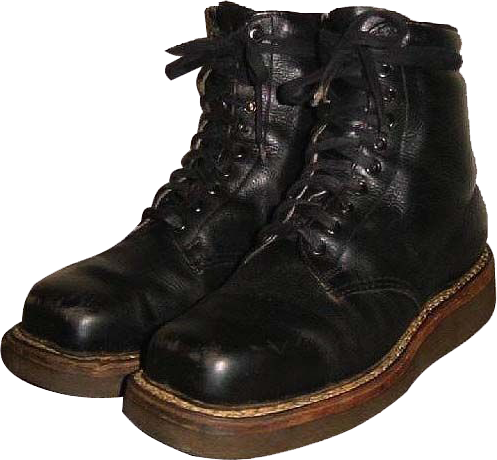

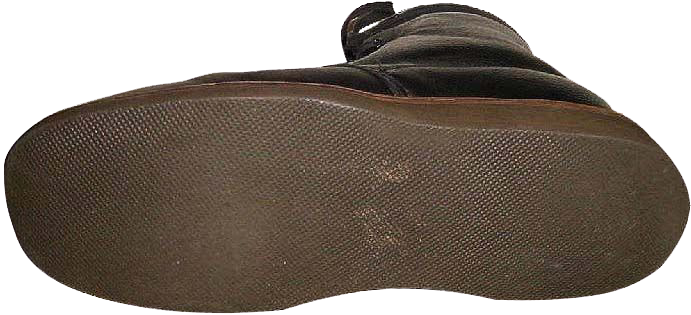
Boots of the second model appeared in 1965 and were not significantly different from the first model: the rubber sole of slightly different color, it featured less number of lacing eyelets - just 10 pairs. The sole was glue-fixed and stitched to the boots top (Goodyear welt construction). The tread pattern of the sole was similar to pilot's boots - shallow mesh, and the sole itself was quite soft. The boots top was made of soft and smooth genuine leather, in the upper part there were soft leather cuffs, the malleolus bones were protected by padding (soft inserts), the inner lining was made of gray thin leather with applied stamp - the purple NVA markings.

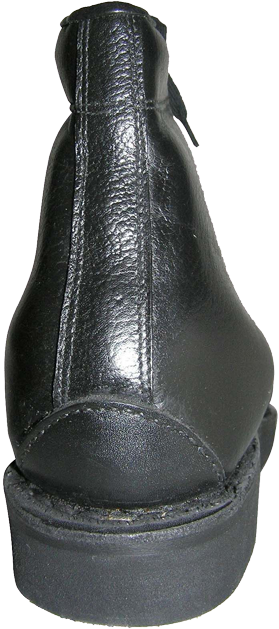
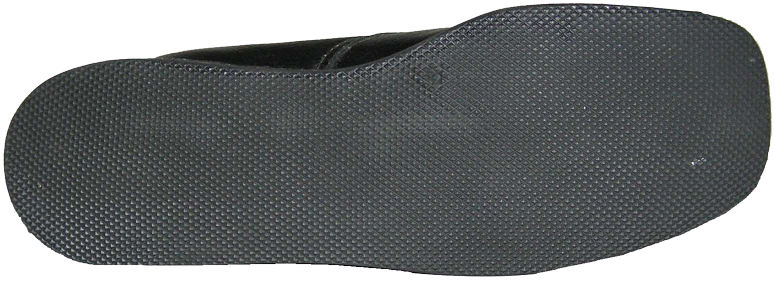
The third model of GDR jump boots was produced from 1969 until the late 1970s. The main visual difference between the third model from the previous "Sprungstiefel" model is a semi-circular pad on the boot's counter. The color of rubber soles turned to black, as well as the inner side of the leather in the upper cuff of the boot.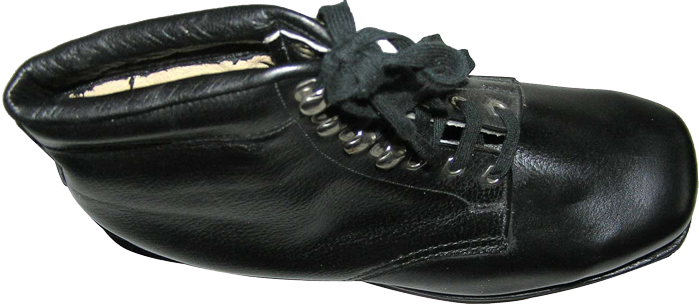
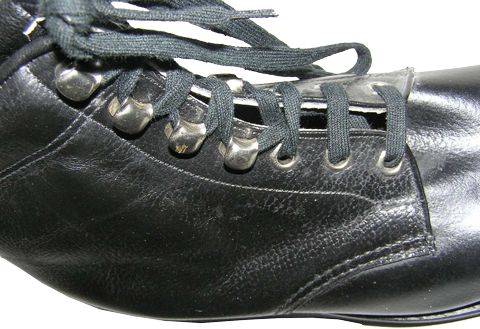
There were three variants of the third model, which are conventionally designated: a), b) and c). All three versions differ from the earlier models by the modified system of lacing. In the model a) the lacing system is provided by three pairs of simple round eyelets with hexagonal- shaped rivets at the bottom, and above there were four pairs of hooks for laces.
On the model b) the lacing system was also provided with three pairs of simple round eyelets with hexagonal-shape rivets at the bottom, while the four pairs of hooks on top were replaced by simple round eyelets with round-shape rivets.
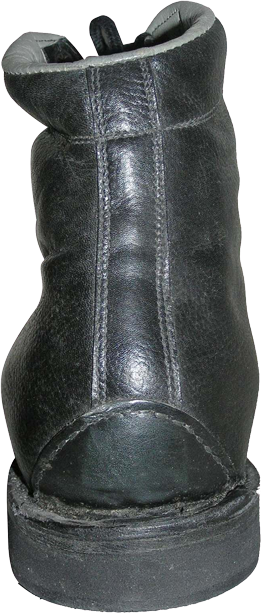
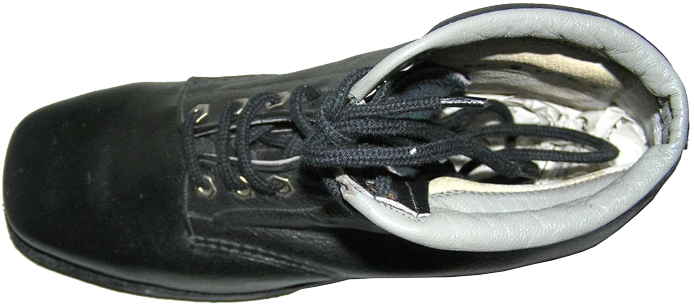
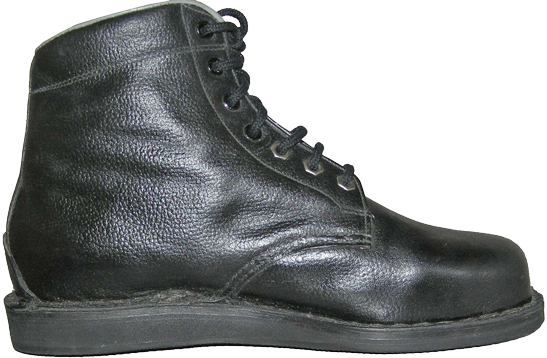
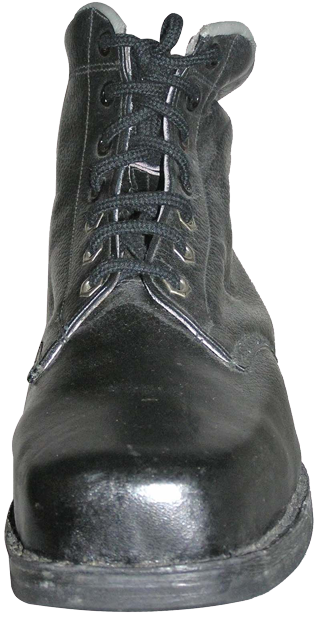
On the model c) the lacing system was provided by seven pairs of identical simple round eyelets with round-shape rivets. The inner part of the leather cuff on the upper of the boots is black again, not gray.
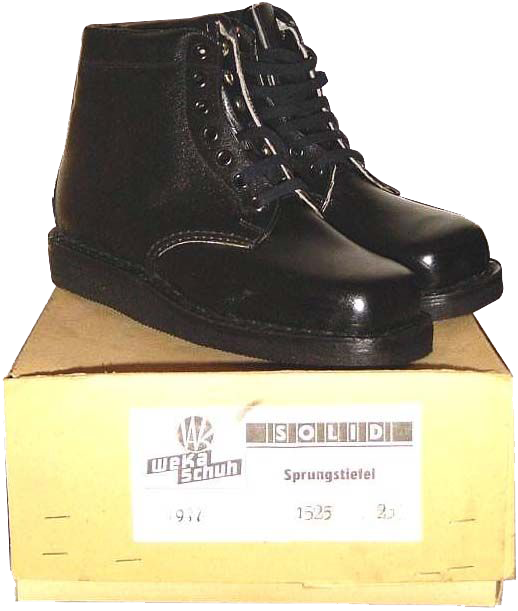
The picture of the model 3 type c) boots, standing on a box, shows the markings of one of the East German factories, that had been producing these boots.
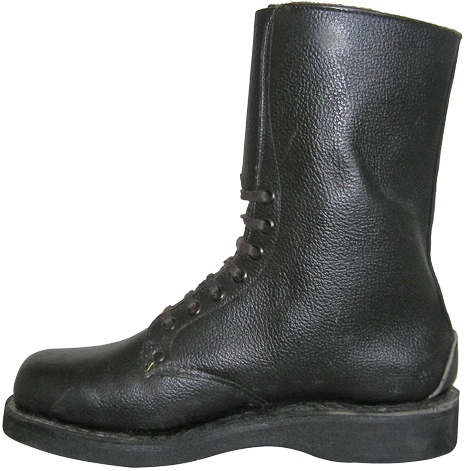
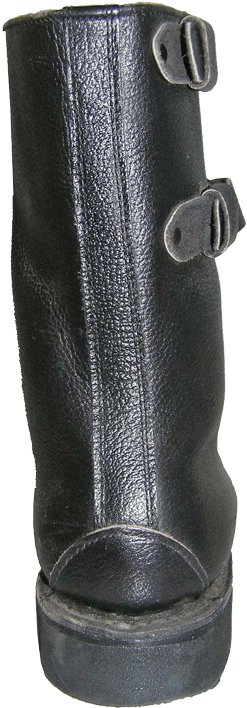
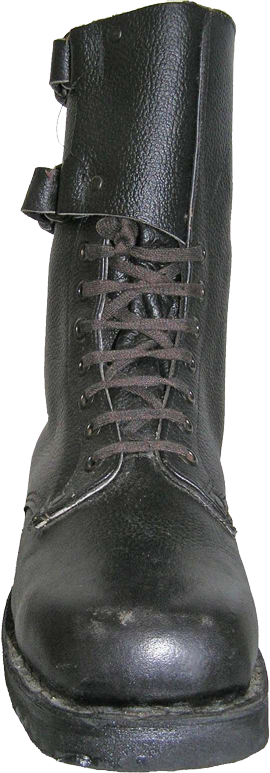
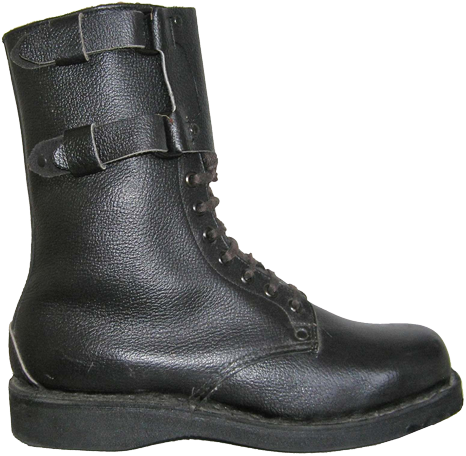
The fourth model of the GDR jump boots, which was produced from 1975 to about 1985, belong a different kind of boots - high boots. Similarly to the previous (third) model, these boots feature the semi-circular pad on the counter for reinforcement and robustness, and in addition the leather cuffs with two D-shaped locking buckles were used, recalling the system used by Czechoslovak M-60 boots. The ends of the leather straps were to be inserted into the stitched leather clutches.
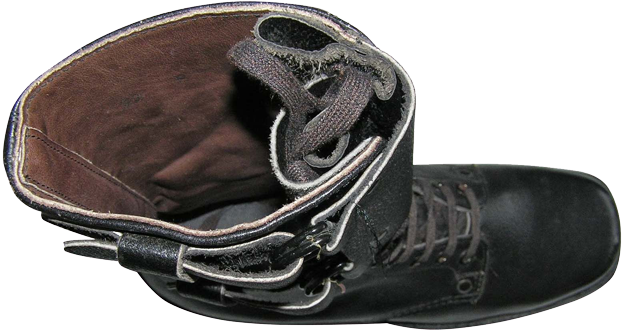
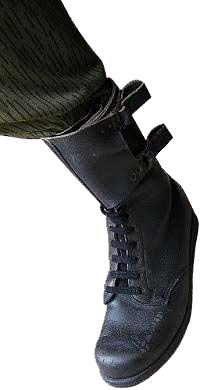
The lacing system remained the same as in the previous model - seven identical round eyelets. The lacing system was reinforced by a pair of rivets alongside the lower part of the lacing. The leather top was made of grain cowhide leather with a hydrophobic impregnation, the flap of the tongue was closed - almost sewn to the top of the boot, and the inner lining was made of thin light brown leather.
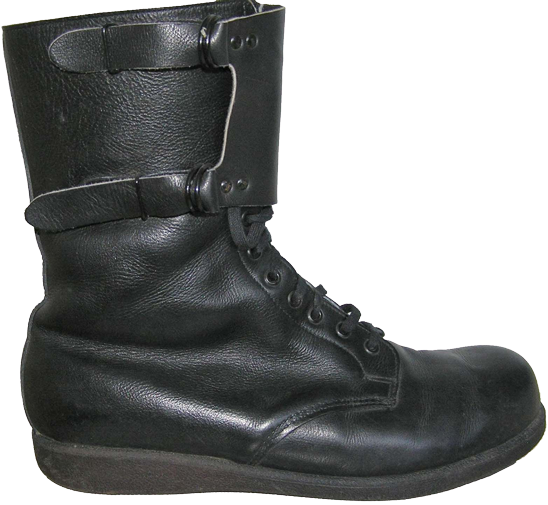
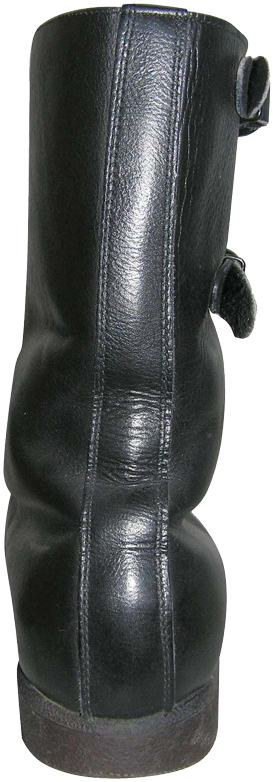
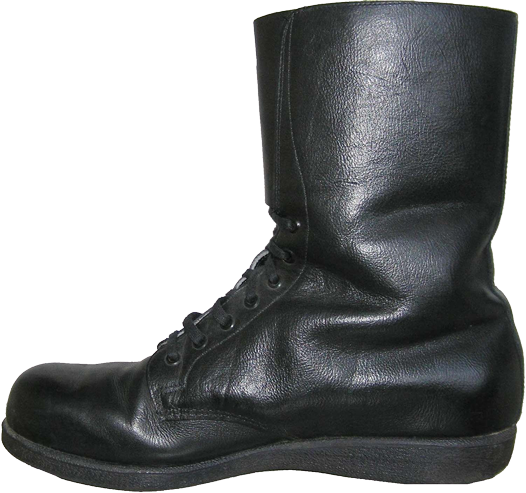
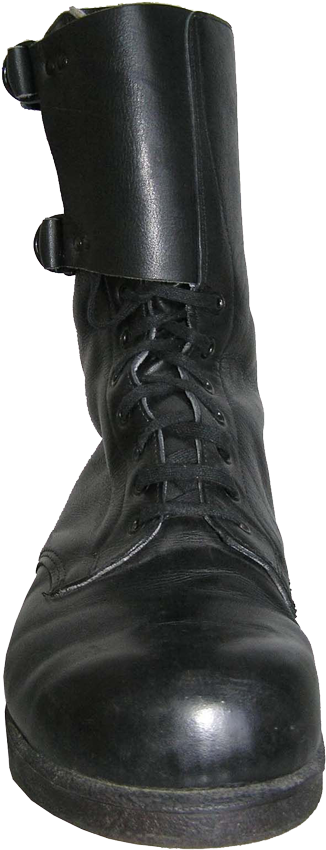
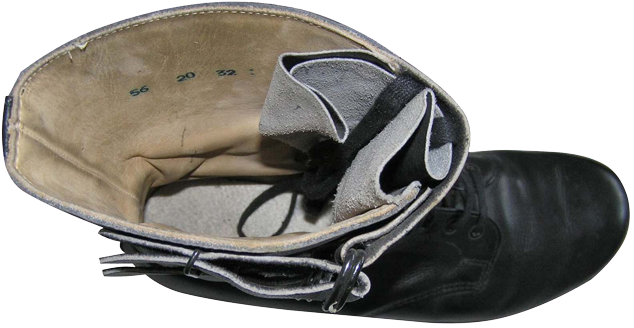
The fifth model of East German jump boots can be characterized by the absence of semi-circular pad on the boot's counter, as well as by replacement of fine mesh pattern soft rubber soles with the polyurethane ones. The tread of such boots featured with clear and distinct tread pattern of circles and ovals.
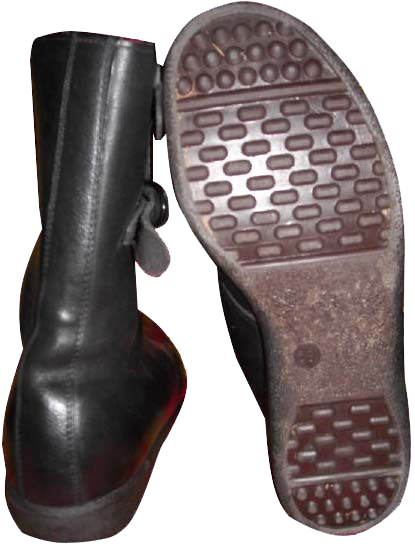
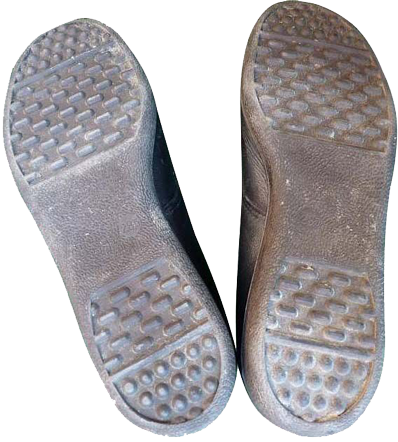
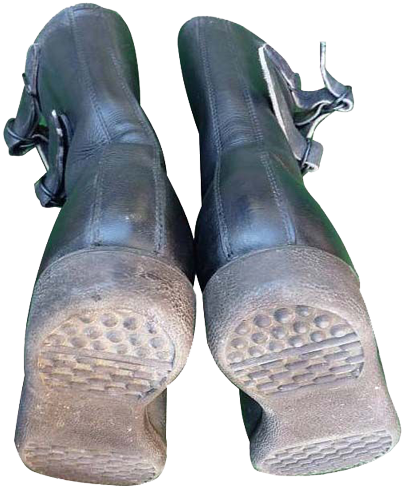
These boots also featured more progressive direct molded soles. The fourth and the fifth models did not feature soft leather cushion at the top, because leather cushions are usually not used on the boots with leather cuffs and buckles.
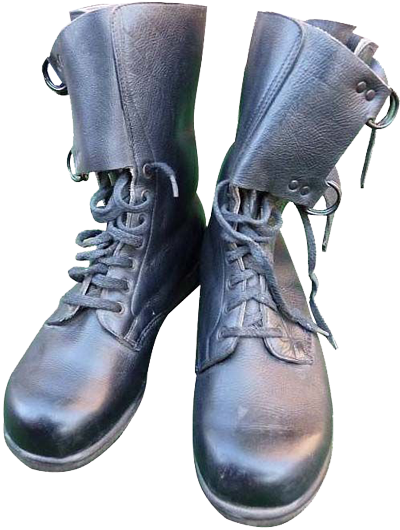
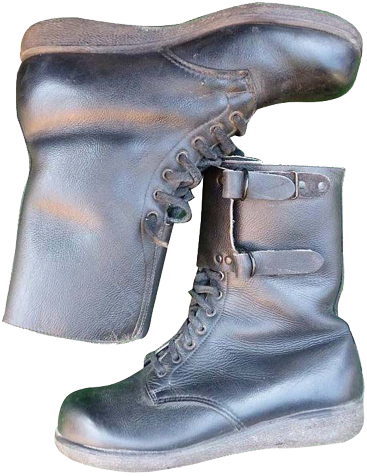
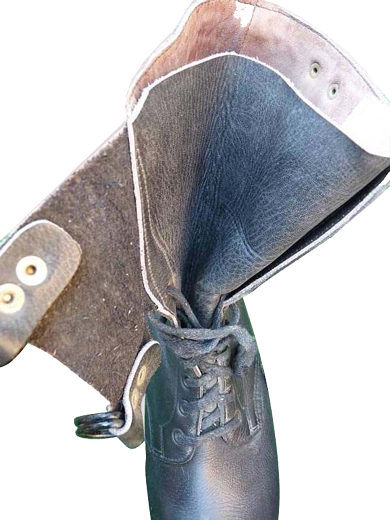
The flap of the boot's tongue is "enclosed", i.e. sewn to the boot's top along its all length. The tongue has the same leather thickness as the boots top. The jump boots of this type were produced from 1985 to about 1990, actually until the end of the GDR.
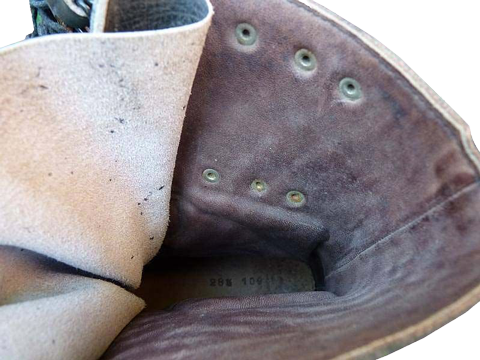

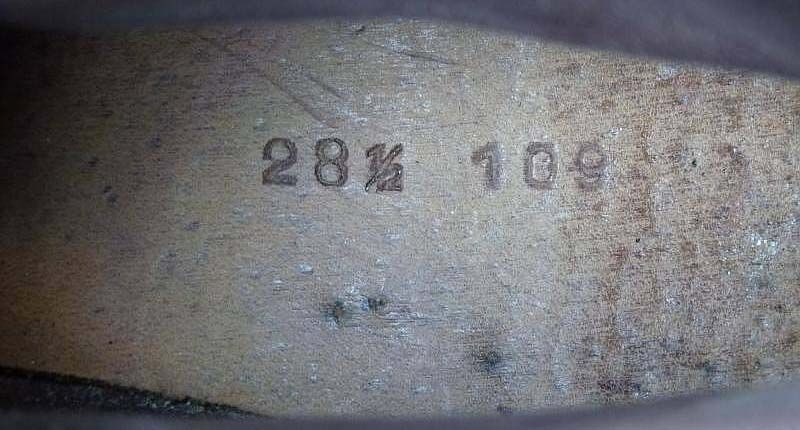
The marking the fifth model of jump boots can be seen on the inside leather lining, under the insole, and on the outsole as well. The insoles of these boots were made of white felt or synthetic fiber. On the provided photos one can see marking 28,5 (size in mm - "Mondopoint" system and purple army stamps. On the polyurethane soles the letter designations of manufacturer ("GJS"), boots width ("G") and, again, the size ("28,5") were indicated.
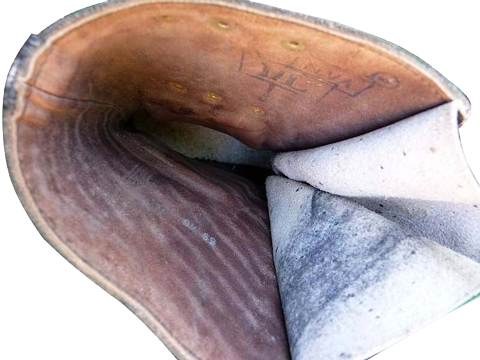
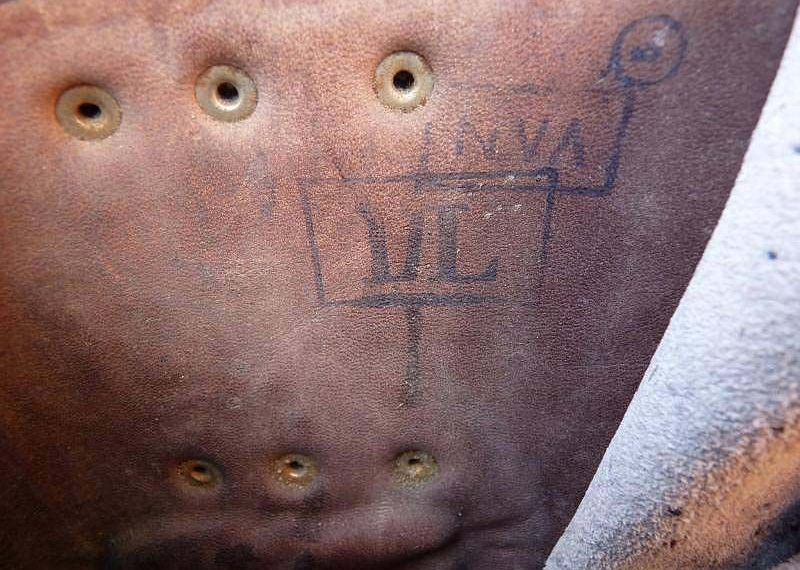
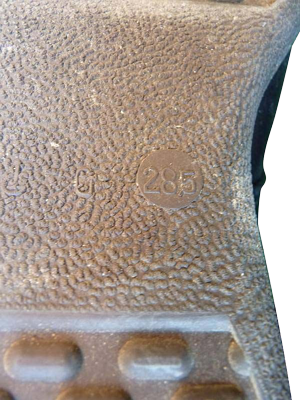
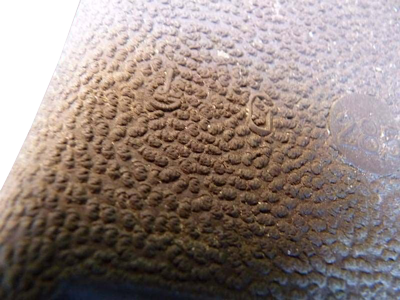
One can't help mentioning the jump boots, used by the agents of "Stasi" (The Ministry of State Security of the GDR). Lacing system consisted of ten pairs of round eyelets. Lower lacing provided more flexible and firm fixation on the feet, they are stitched across the surface of the top. The sole and tread pattern of such boots match the jump boots of types from 1 to 4, the sole is glued and stitched to the boots top.
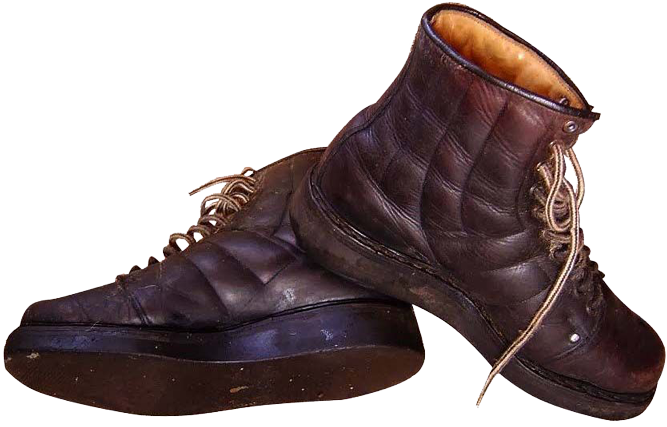
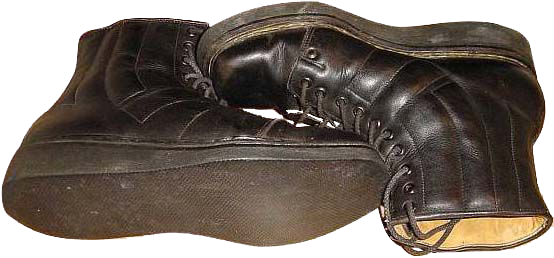
The photos show the jump boots, used in the period from mid to late 1980s. They differ from the NVA jump boots in appearance and made more efficiently and accurately, according to individual sizes and by special order on a special shoe company in the East German town of Suhl. Those, who have used to wear the East German "Stasi" jump boots usually impress the best opinions about them on web forums. In fact, such boots were extremely comfortable and reliable.
Sources of the images:
http://johansddrmilitaria.blogspot.com
http://flaechentarn.de
http://nvaspain.blogspot.com
http://sid-boyle.io.ua
http://nazapad.clicforum.fr
Exclusively for cartalana.com
We have much more interesting information on this site.
Click MENU to check it out!
∎ cartalana.com© 2009-2025 ∎ mailto: cartalana@cartalana.com